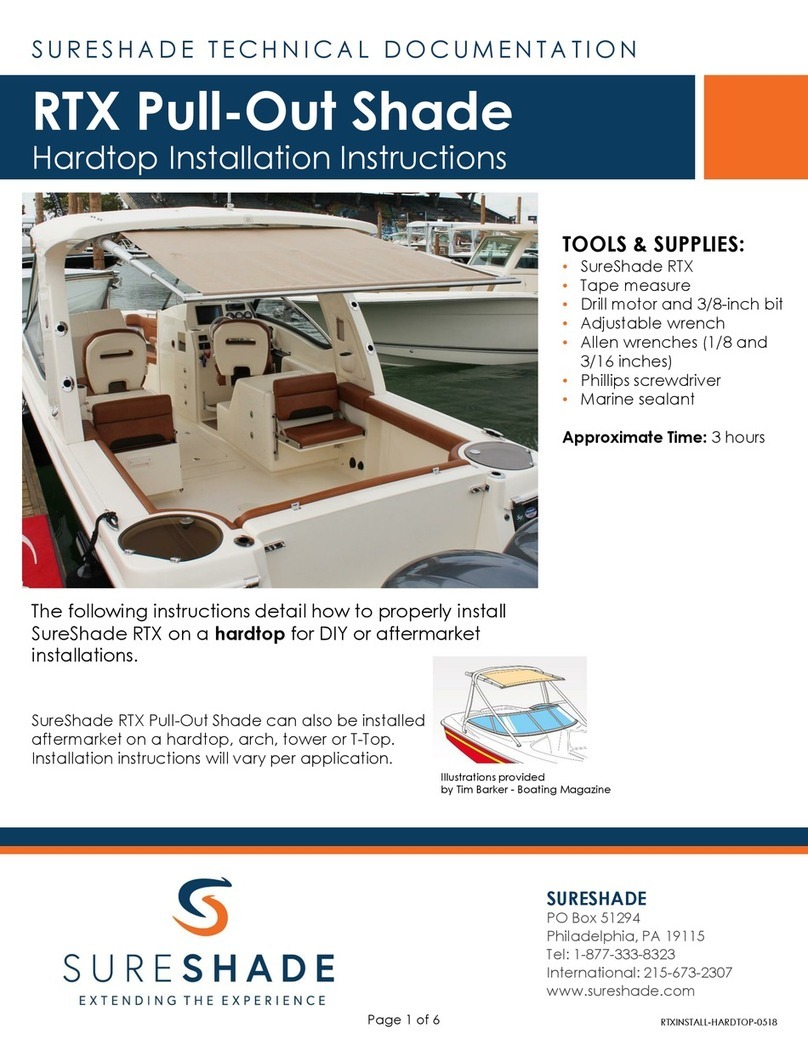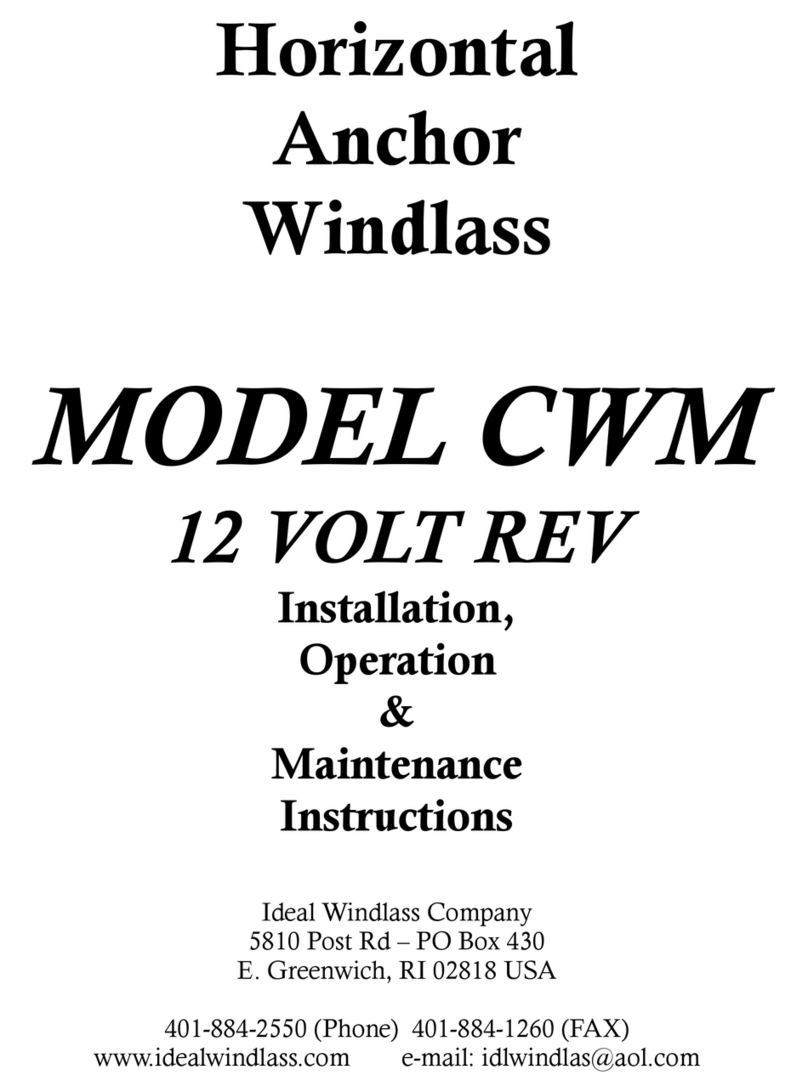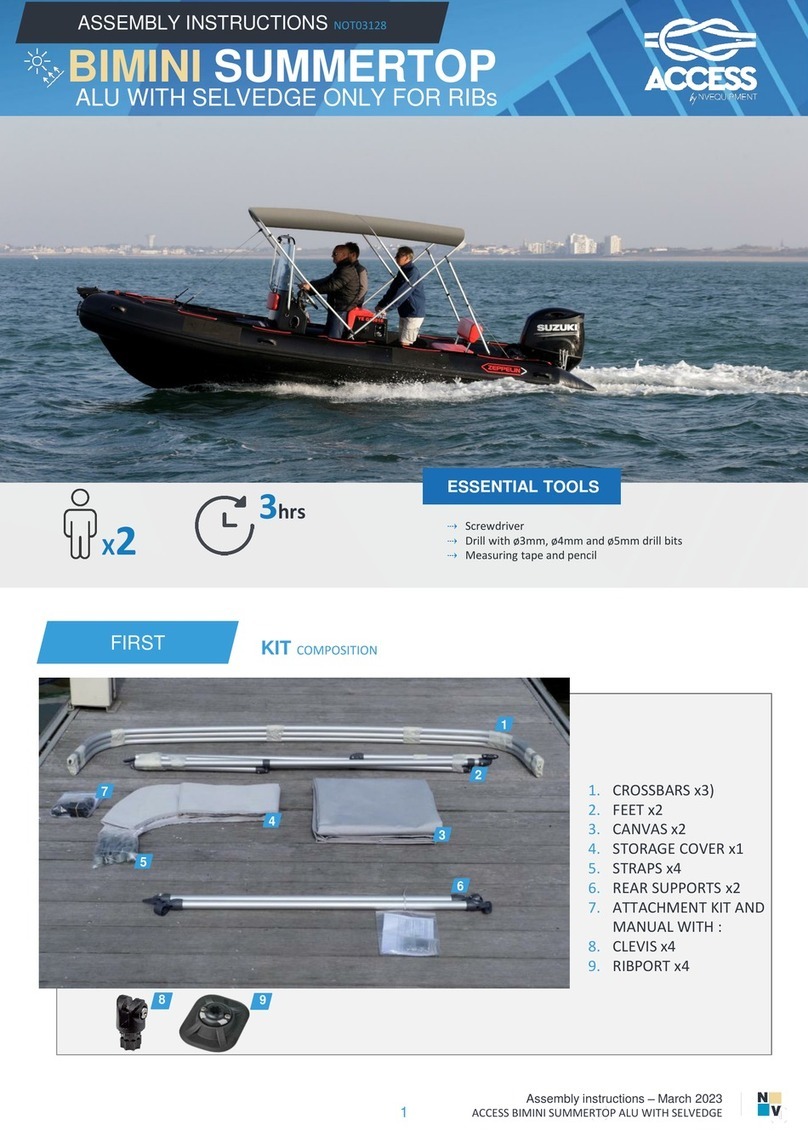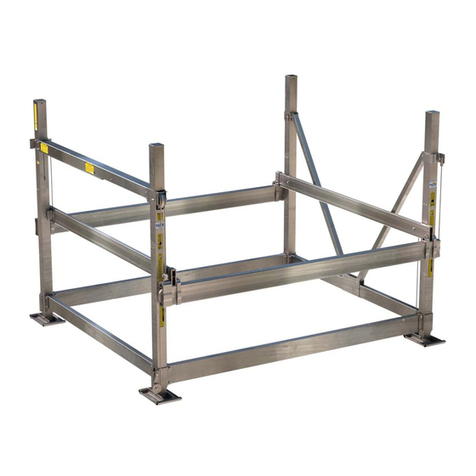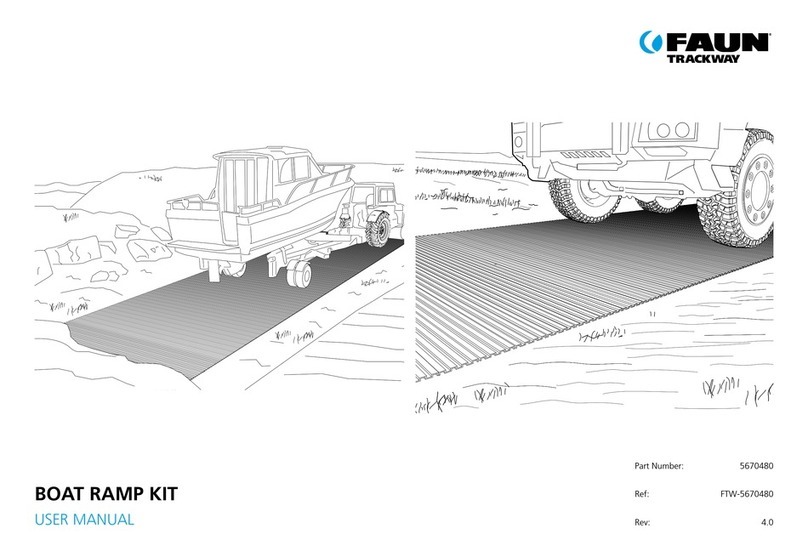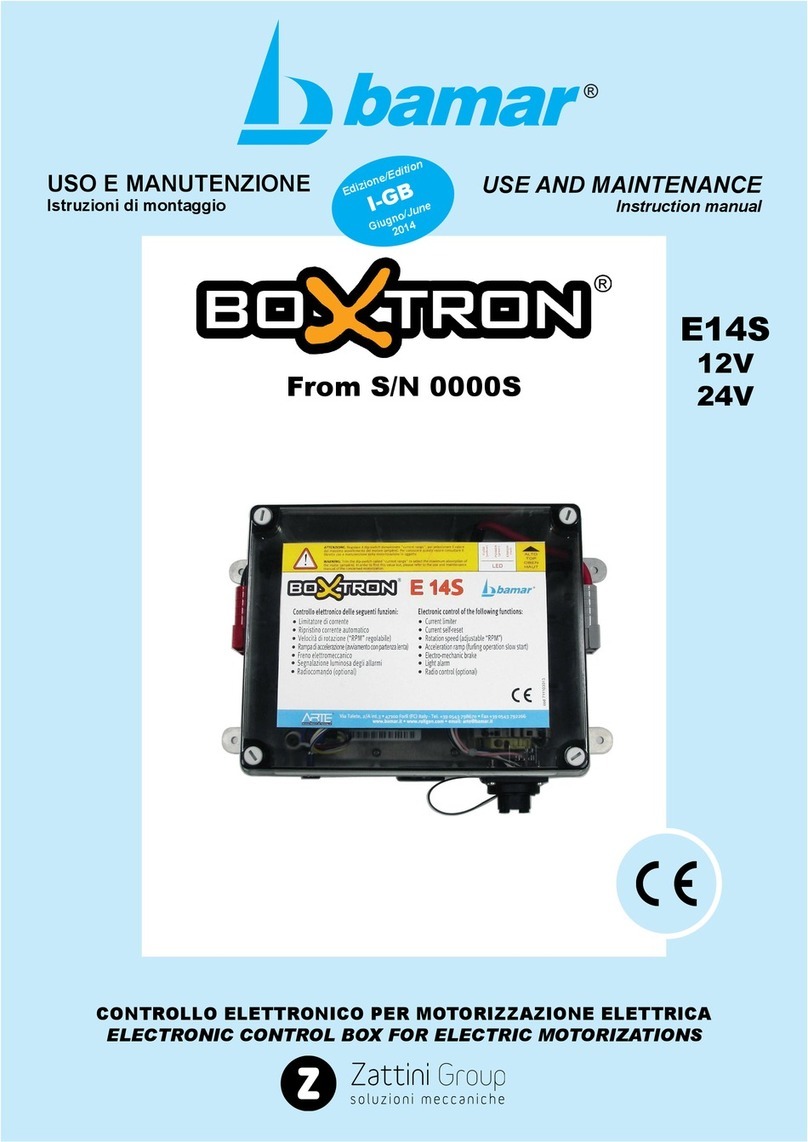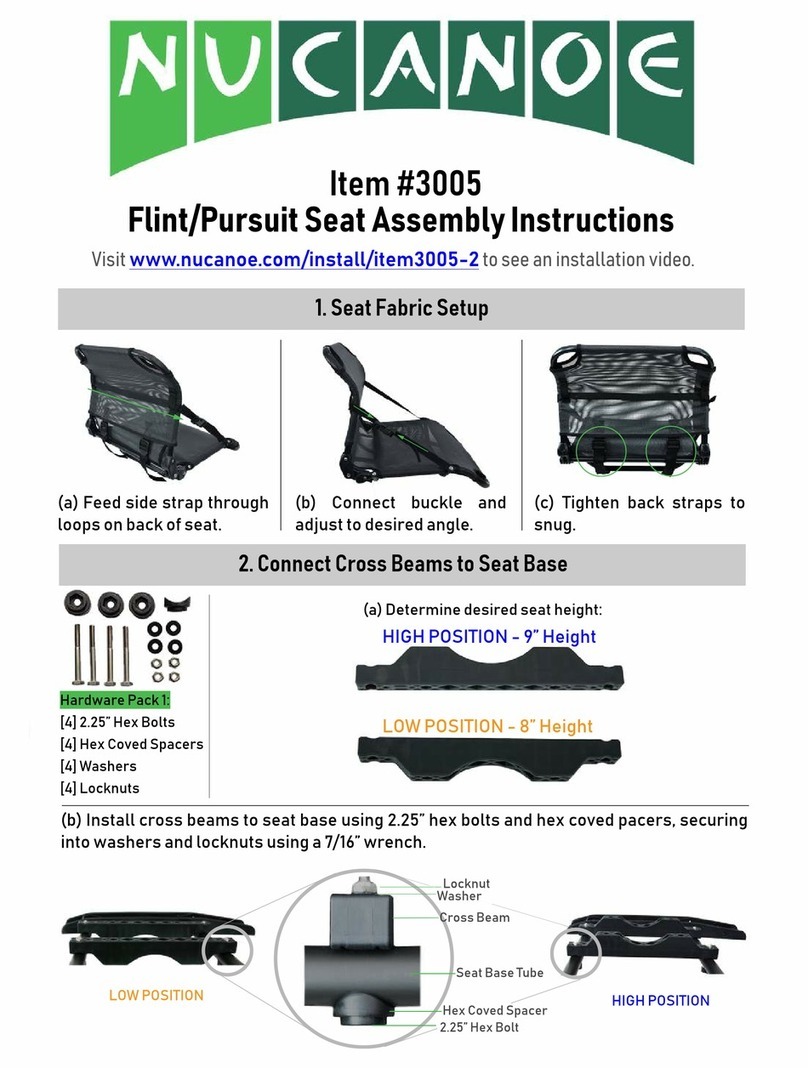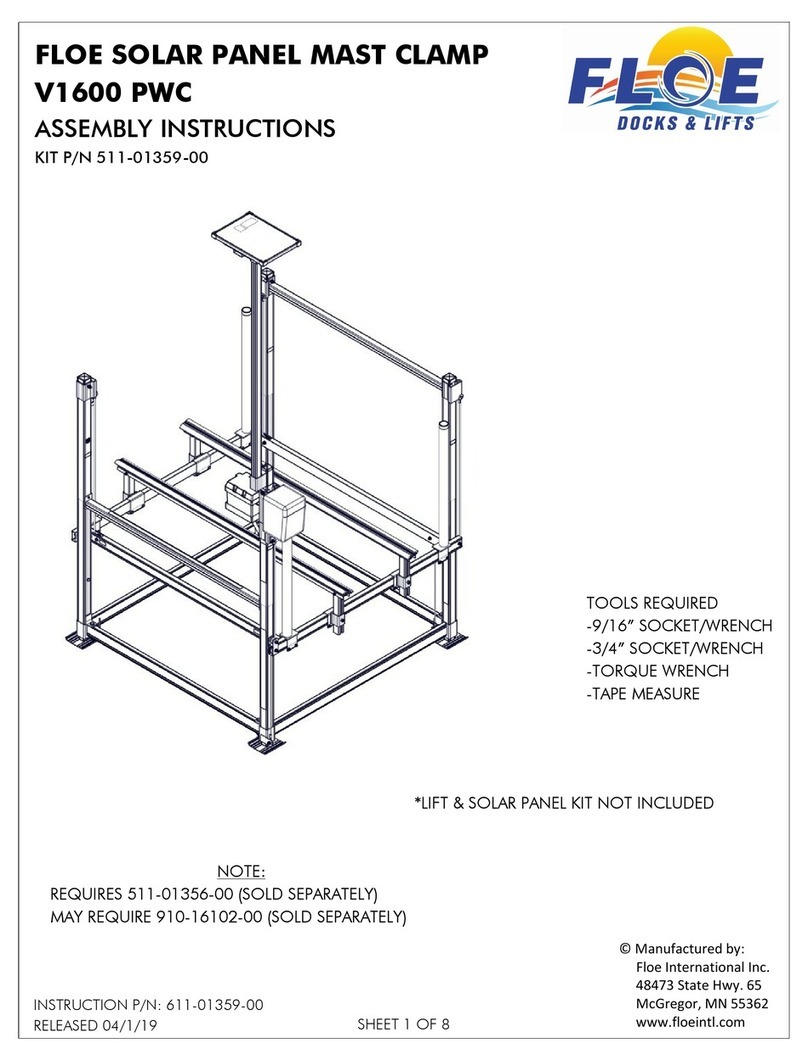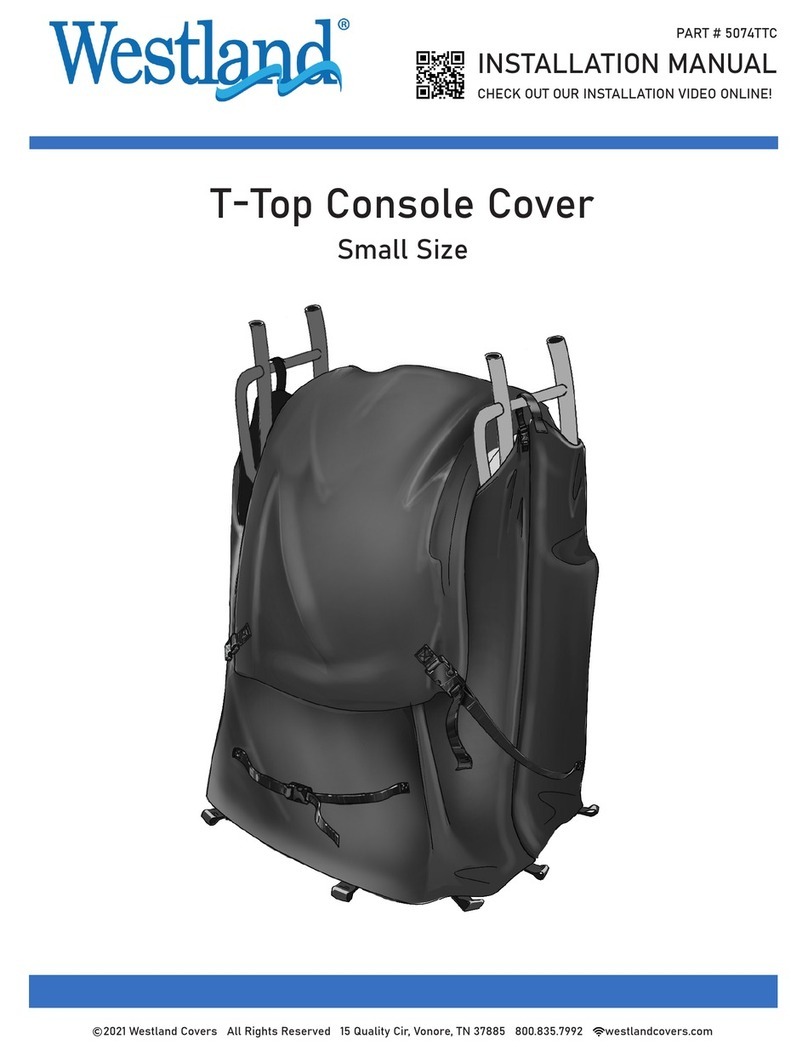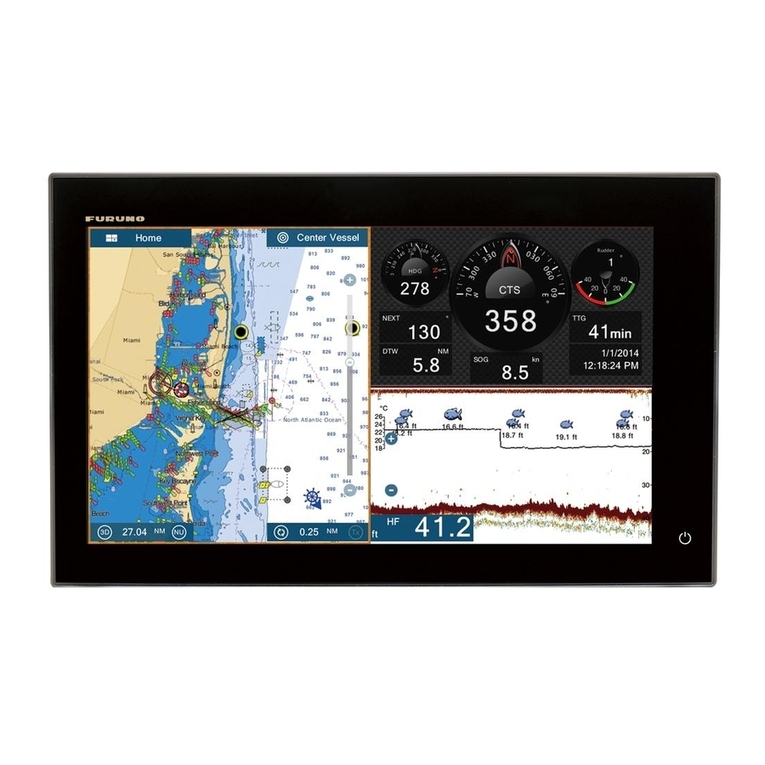Topper 49050 User manual

2.
OWNERS MANUAL
www.toppersailboats.com
From Sail Number 49050

1.
INDEX INTRODUCTION ADDRESS OF MANUFACTURER
CRAFT IDENTIFICATION
NUMBER (CIN)
BUILDER'S PLATE SYMBOLS
Congratulations on becoming the owner of a Topper
sailboat. The Topper is a proven design success story
and we are sure that you will enjoy many years of
trouble-free and exciting sailing.
This manual applies to Toppers with sail numbers from
49050. It contains important safety information which
should be read and understood before sailing the
boat.
The manual has been compiled to help you to operate
your boat safely and get the most out of your sailing. It
contains details of the craft; the equipment supplied
familiarise yourself with the craft before using it.
have arranged for new Topper owners to receive FREE
membership of the INTERNATIONAL TOPPER CLASS
at the back of this Owner’s Manual.
any spare parts and accessories you may need. Your
International Topper Class Secretary will be pleased to
advise you on all aspects of Topper ownership.
you obtain handling and operating experience before
assuming control of the sailboat. The Topper Class
Association will be pleased to advise you of local
This owner’s manual is not a detailed maintenance or
refer to the manufacturer. Always use trained and
PLEASE KEEP THIS MANUAL SAFELY AND HAND IT
OVER TO THE NEW OWNER/KEEPER SHOULD YOU
NOT OWN/KEEP THE TOPPER.
For further information (or to order spare parts and
accessories) please contact:
Topper International Ltd
Kingsnorth Technology Park
Ashford
Kent TN23 6LN
United Kingdom
email inf[email protected]om
website www.toppersailboats.com
the starboard side of the transom.
The Builder’s Plate is located in the deck cockpit
of the boat. It.details information on the Design
the Maximum Load and the CE/UKCA marks. The Sail
Number is also detailed on the Builders Plate.
Introduction
Address of Manufacturer
Craft Identication Number
Builder's Plate Symbols
Design Category
Important Safety Information
Sail Numbers & Leering
Control Lines
Assembling Your Topper
Mast and Sail
Rigging
The Rudder and Daggerboard
Adjusting the Sail
Maintenance
Warranty
Declarations of Conformity
Topper Class Association
2
2
6
39
43
63
65
69
73
Serial (Sail) Number:
Warning:
Max. number of persons:
Read Manual:
Max. load including persons:
Risk of Capsize:
Overhead Cables:

2. 3.
This sailboat has been assessed for stability and
buoyancy in Design Category C.
CATEGORY C – Craft designed for voyages in coastal
conditions up to and including wind force 6 and
may be experienced.
The TOPPER sailboat complies with this design
• Satisfactory maintenance of the boat and
equipment.
Users of the boat are advised that:
• All crew should receive suitable training.
• The boat shall not carry more than the
maximum load.
• Any water in the hull should be kept to a minimum.
• Stability is reduced by any weight added above the
centre of buoyancy (typically the deck).
Please read the important safety information and
read the manual. The safety information must be
fully understood before sailing the boat.
GENERAL WARNINGS AND PRECAUTIONS
• The Topper is intended for daytime use only.
• The owner/operator is responsible for the safety
of those on board.
WARNING:
launching and recovering. The mast goes up a long
way and shock or death could result if it comes in
contact with overhead wires. Always check when
moving the boat around and raising the mast. Keep
clear of any overhead wires and cables.
WARNING: Forward visibility can be restricted using
some sails. Extreme care is necessary to prevent
collisions. The helms-person should adjust their
position as necessary to ensure all round visibility. It
may be necessary to modify the trim of the sail.
WARNING: The drain plug must be secured in the
closed condition before launching and must not be
CAUTION:
on any part of the Topper including removable parts.
Deterioration in the craft durability and strength can
occur if this is not adhered to.
CAUTION: Keep the Topper away from extreme heat.
IMPORTANT SAFETY INFORMATION
BEFORE YOU GO SAILING
DESIGN CATEGORY IMPORTANT SAFETY
INFORMATION
•
clothing and safety equipment for the conditions
and time of year.
• The crew should be familiar with the use of all
safety equipment and emergency manoeuvring
• Always wear an approved buoyancy aid or
•
the relevant national regulations.
• A sailor’s safety knife should be carried on board.
• All loose equipment on board should be secured.
• Ensure that the rudder is secured by the clip on
the transom.
• Make sure a third party knows where you are
sailing and how many there are of you. If possible
other boat on the water in the vicinity.
• Check the weather forecast and take the sea
conditions into account when sailing.
• Ensure that the anticipated wind and sea
conditions will not exceed those stated for Design
includes the hazards of a freak wave or gust which
are potentially dangerous conditions where only
maintained boat can satisfactorily operate.
• Check the time of high and low tides if applicable.
• Seek advice of local conditions if sailing in a new
area.
• Never sail beyond your ability or that of your crew.
• Ensure that you and your crew can cope with any
changes forecast in the weather conditions.
• Understand and be competent in the sailing skills
• Always check the condition of your craft before
especially after any suspected damage. Ensure
that the hull is free of water and the drain plug is
properly sealed.
• Always maintain your Topper properly and take
into account the deterioration that will occur over
time and as a result of heavy use or misuse.
•
of recreational craft. Transportation may also be
subject to local regulations.
•
environmental regulations and please respect all
relevant codes of good practice.
•
hatch bins is a sealed buoyancy compartment
and consequently the following points should be
noted:
• Do not puncture the buoyancy compartment.
• Should the buoyancy compartment become
boat until the compartment is repaired.
•
Ensure that all fastenings are resealed properly
using an appropriate sealant.
CAR TOPPING
Always refer to the car manufacturer instructions
for carrying loads on the roof.
The Topper is designed to be car topped on a two bar
and ensure that the front bar supports the boat
immediately behind the aft end of the foredeck.
Always secure the straps or ropes around the bars.
Ensure that both the bow and the stern are tied down
tightly to the car’s bumpers or a strong point. The
spars can be carried alongside the boat. If you have
upside down hull of the Topper or packed down
in the boot.

4. 5.
TRAILING
WARNING: When trailing your Topper you should only
use an approved trolley and road trailer. Transporting
your Topper may be subject to local regulations.
Securing the boat to its trailer is crucial because too
Follow the instructions below for safe trailing:
•
with the gunwale supports up under the gunwales
and the bow located in the bow snubber
of the trolley.
• Ensure the trolley is properly located
• Tie the boat down to the trailer at the bow and
across the middle.
•
the boat in contact with the trolley supports.
• Use padded material where any straps or ratchet
touch the hull or deck.
• It is also a good idea to tie the boat down when it
is left in the dinghy park to prevent any damage to
your boat in the event of strong winds.
ANCHORING AND MOORING
The Topper is a day boat and not designed to be
moored or anchored.
OUTBOARD ENGINE
The Topper is not designed for use with an
outboard engine.
CAPSIZE RECOVERY
The mainsheet should be uncleated and made sure
that it will run freely when the boat is righted. The
vang/kicker should be eased to de-power the top of
the mainsail. If the boat inverts it should be pulled
onto its side so that the rig is horizontal to the water.
It sometimes helps to pull it up with the aid of the wind
blowing over the deck and rig.
There are two basic situations to recover from:
• When the rig is lying in the water
pointing downwind.
• When the rig is lying in the water pointing upwind.
RIG POINTING DOWNWIND:
Climb onto the daggerboard and pull the boat slowly
upright using the mainsheet. When the boat gets to
45 degrees one of the crew should climb in. As the
boat continues to right take the tiller so that as the
boat returns to its normal orientation you are under
control of the boat as soon as possible. Once you are
get sailing again.
RIG POINTING UPWIND:
This is quite often the position the boat ends up in.
Climb onto the daggerboard and as you begin to right
help you right it. Depending on the wind strength the
the faster you will have to move. As the mast leaves
to the windward side to prevent the boat capsizing
again.
simply climb over onto the daggerboard and follow the
procedure for the rig pointing downwind.
• Conform to the sailing rules of the road as well
as any local requirements.
• Look out for changing weather conditions.
• Never sail beyond your ability or that
of your crew.
• Ensure that you and your crew can cope with any
changes in the water and wind conditions.
STABILITY AND BUOYANCY
The minimum crew weight required for righting the
Topper: 30 kgs.
The Topper has been fully assessed for stability and
buoyancy.
This is to ensure the boat can be righted by the crew
even in light conditions.
It is therefore essential that you should familiarise
kind of safety patrol to assist should you get into
MAN OVERBOARD PREVENTION
AND RECOVERY:
There are the areas covered with non-slip coating to
help prevent man overboard situations and assist in
surface and outer edge of the side deck.
The toe straps can also be used to assist recovery
from a man overboard.
It is advisable to re-board the boat from the windward
side when climbing aboard via the gunwale.
TOWING AFLOAT
Should it become necessary to tow the Topper you
should secure the towing line around the base
of the mast.
Raise the daggerboard and stay at the tiller. In the
event of the loss of the rudder sit well aft.
The painter supplied with the Topper is not suitable
for towing and the bow is not a recommended
tow point.
CAUTION: The tow line used should be of a suitable
length and diameter for the conditions and the
duration of the tow being undertaken. It is the owner/
operator’s responsibility to ensure that any line used
for towing is adequate for the intended use and
strength of the towing point.
The maximum recommended strength of a towing
line is 2.01kN.
CAUTION: Do not tow other craft.
CAUTION:
for the conditions.
GROUNDING
After grounding thoroughly inspect the hull for
the daggerboard.
IMPORTANT SAFETY INFORMATION
ON THE WATER

6. 7.
most important to apply the self-adhesive numbers to
the sail.The sail numbers are exclusive to the boat and
correspond with the serial number/sail number plate.
These are always located inside the bo
to the toe strap.
Follow these instructions carefully it is not a job to be
hurried. In our experience the best way to stick the
backing paper slowly as you push the number onto
the sail.
IF IN DOUBT - PLEASE ASK
SAIL NUMBERS
(please note all measurements are minimums)
• Should be placed on both sides of the sail
with the numbers on the starboard side
being above the ones on the port side.
• They should be placed two panels
below the Top Hat logo.
• The height of the numbers should be 230mm.
• The numbers are supplied as ‘digital eights’
• from which you can produce your
own sail number.
•
‘digital eights’ is shown below.
• There should be 45mm between
each element of the complete number.
• The numbers should be in a
contrasting colour to the white sailcloth.
STARBOARD SIDE
• The upper edge of the numbers should be
placed 45mmfrom the upper seam of
that panel.
• They should start 45mm from the
back of the sail.
PORT SIDE
• The upper edge of the port numbers should
be 45mm below the starboard side numbers.
•
back of the sail.
SAIL NUMBERS & LETTERING
GBR SAIL LETTERING
• Should be placed on both sides of the sail
•
being above the ones on the port side.
• They should be placed in the panel beneath
the Top Hat logo.
•
•
as clear as helvetica.
• There should be 45mm between each element
•
as the sail numbers.
STARBOARD SIDE
•
45mm from the upper seam of that panel.
• They should start 45mm from the
back of the sail.
PORT SIDE
•
below the ones on the starboard side.
•
back of the sail.
GBR SAIL LETTERING
Table of contents
Popular Boating Equipment manuals by other brands

Humphree
Humphree HCS-5 installation manual
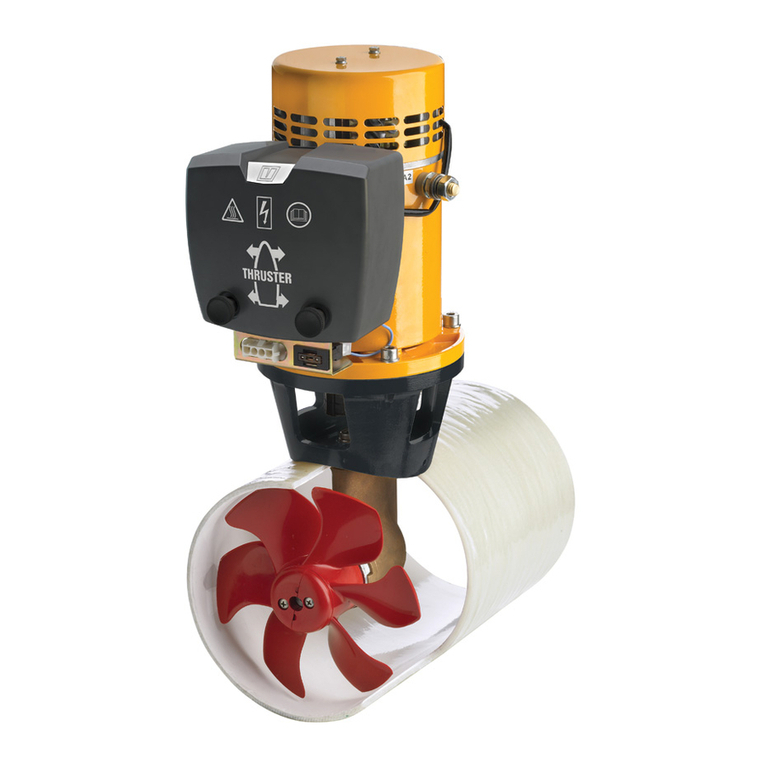
Vetus
Vetus BOW4512D Operation manual and installation instructions
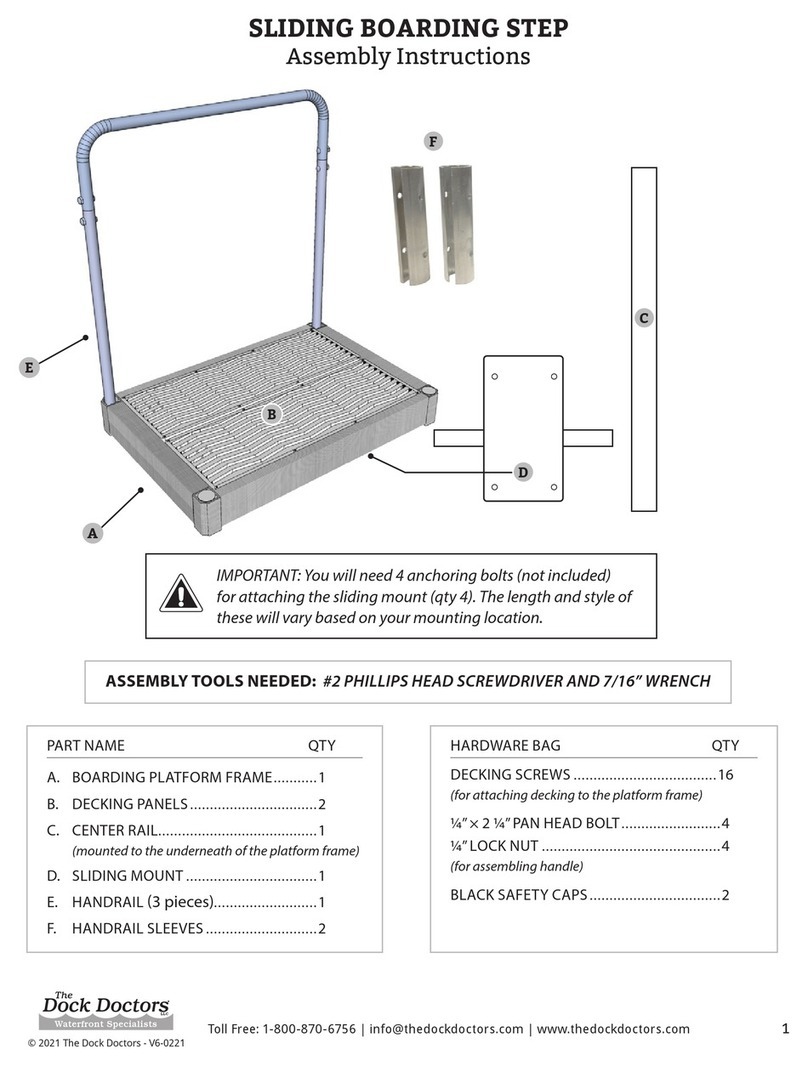
Dock Doctors
Dock Doctors SLIDING BOARDING STEP Assembly instructions

Mastervolt
Mastervolt Mass Combi 12/2000-100 Quick installation

SeaView
SeaView PM5-FMD-8 installation instructions
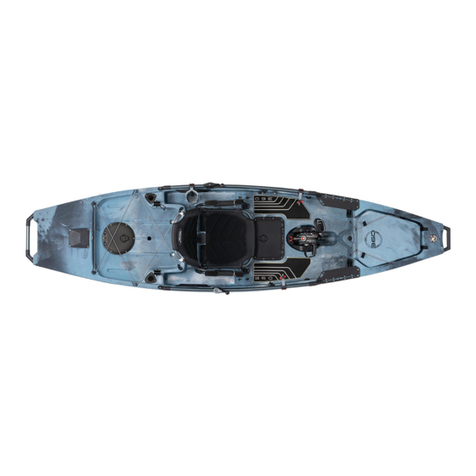
Hobie
Hobie Mirage 360 manual
